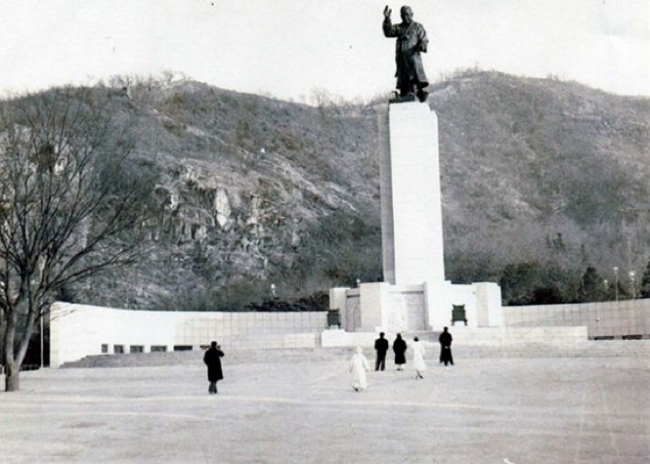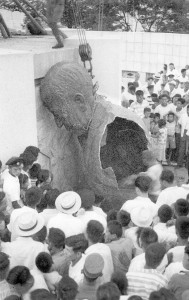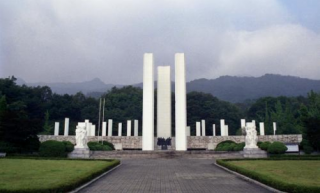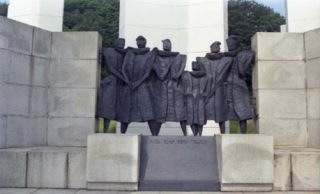I’m interested in studying the public monuments in Korea during the Park Jung Hee’s regime. These years are the core era of post-war Korean history during which modernization and economy development were achieved. At that time‚ “Koreanized Modern Art” was established based on the concept of “art for art’s sake” in the art sphere‚ and public monuments were erected in public spaces‚ including in the main streets of cities‚ in parks‚ and in historic sites. The public monuments from this era include statues‚ war memorials‚ and monuments for historic events. I would like to approach to ‘Model” by researching and analyzing the art-socialistic approach of post-war Korea.

Lee Sung Man President statue is built in 1956, at Nam San Mountain in Seoul. It shows the overwhelming size of the statue.
In early 1960, the monuments for democracy were built to memorize democratic revolution victims and for the victory of civil rights. These monuments commemorate the astonishing fact that the Koreans had been freed from the annexations era of Japan in 1945‚ not long after accepting the democratic system in 1948 and confronting the dictatorship of Lee Sung Nam’s regime. Actually‚ the Republic of Korea is exceptional case among other underdevelopment nations‚ such as those in Asia and South America. As a result of the civil rights revolution‚ President Lee’s statues were destroyed and were replaced with images of a young man at the Korea University and Seoul National University‚ which symbolized the power of students and learning.
Among of them‚ “Monument for the Young Man‚ Victims of the April 19th Revolution” was erected at Suyuri (the northern region of Seoul) through collaboration between students‚ civilians‚ and the new government. This monument was more than simply being the first national monument because this project marked the first instance of a huge public monument that created an allegory for a specific point in history.
The meaning of “public” has changed according to historic and social changes‚ which is why the interpretation of public monuments‚ diversity and adaptation is important.



